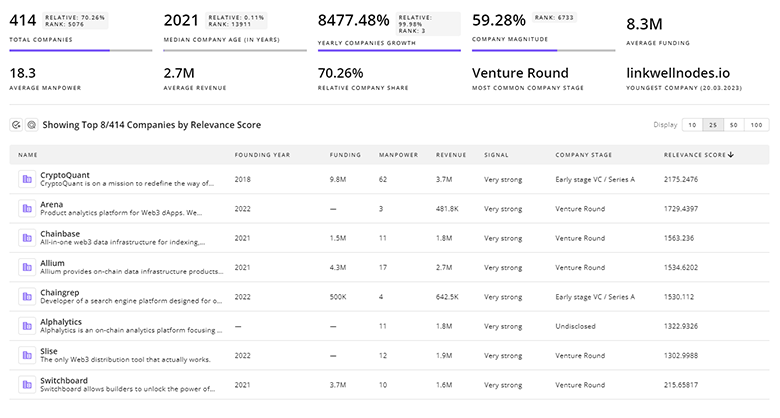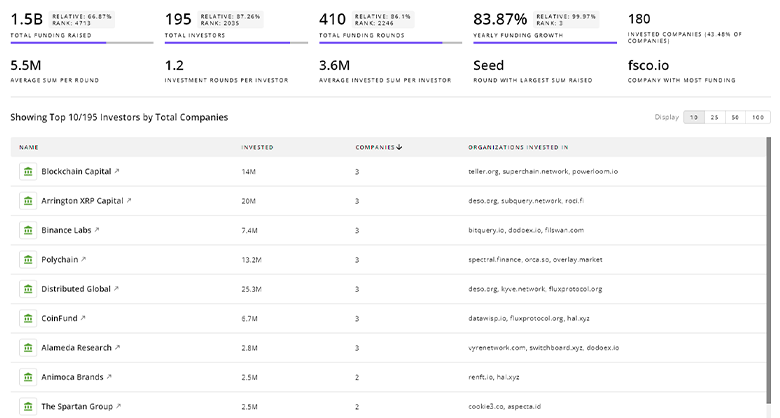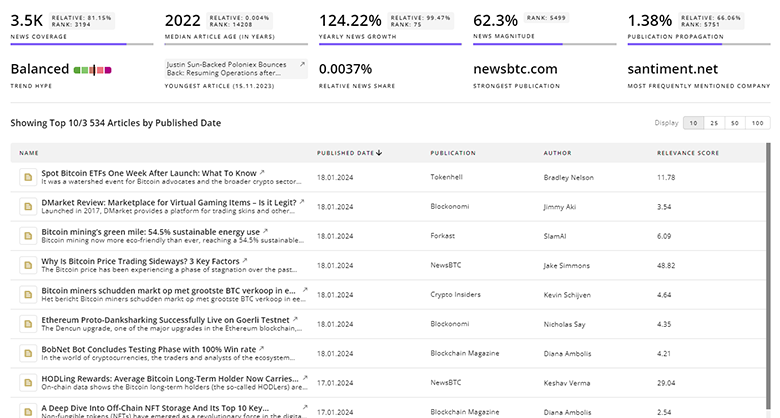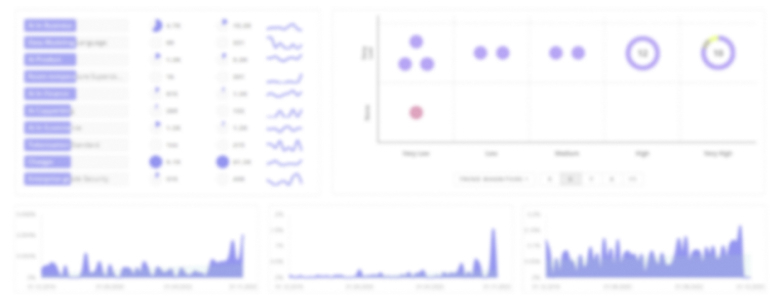
Hybrid AI Report
: Analysis on the Market, Trends, and TechnologiesThe hybrid AI sector is scaling fast and becoming a strategic priority: the internal trend data shows 390 companies working the space and total funding of $2.87B, a signal that investors and founders treat hybrid approaches as a distinct market opportunity. This report synthesizes patent activity, market forecasts, recent news, and company evidence to explain where hybrid AI delivers measurable value (latency, privacy, compliance), which technologies enable it (neuro-symbolic stacks, RAG, multi-agent orchestration), and which tactical moves capture near-term commercial advantage.
We updated this report 22 days ago. Missing information? Contact us to add your insights.
Topic Dominance Index of Hybrid AI
The Topic Dominance Index combines the distribution of news articles that mention Hybrid AI, the timeline of newly founded companies working within this sector, and the share of voice within the global search data
Key Activities and Applications
- Real-time decision engines that combine rule-based logic and ML to reduce failure modes in high-stakes systems (fraud detection, industrial controls). This fusion lowers false positives and creates deterministic audit trails required by compliance teams.
- Edge-centric inference and orchestrated inference pipelines that move workloads between cloud, on-prem, and edge to meet sub-50 ms latency needs for robotics, ADAS, and industrial controls; enterprises report near-universal hybrid deployments for performance-cost tradeoffs AI Infrastructure Market Statistics: Size, Growth, & Trends (2025).
- Privacy-preserving model updates (federated learning + on-device inference) so regulated verticals keep raw data local while sharing model improvements centrally; this reduces compliance exposure and data transfer costs.
- Human-in-the-loop workstreams for safety and calibration: workflows route low-confidence or safety-sensitive cases to experts, increasing trust and reducing catastrophic error risk in agentic workflows.
- Hybrid GenAI products that combine generative outputs with contextually precise predictive models (e.g. RAG + domain ML) to produce grounded, auditable responses for customer support, legal document automation, and clinical decision support Multimodal: AI’s new frontier.
Emergent Trends and Core Insights
- Hybrid agents extend single-session assistants into long-horizon workers by persisting memory and tool state; new commercial models center on agents that can act autonomously for hours while retaining auditability, shifting the human role toward supervision and adjudication Anthropic’s new hybrid AI model can work on tasks autonomously for hours at a time.
- Regulatory pressure makes explainability a commercial requirement not only an ethical preference; vendors that provide provenance, trace logs, and human-readable rationales capture procurement decisions in finance, healthcare, and public sector Explainable AI market forecasts.
- Edge compute and specialized processors support distributed inference strategies; this reduces cloud costs and enables applications that cannot tolerate network variance (industrial control, ADAS) AI Infrastructure Market Statistics: Size, Growth, & Trends (2025).
- Multi-agent and modular agent systems win for complex workflows: ensembles of narrow agents yield better reliability and easier certification than monolithic agents for regulated tasks such as medical triage and legal automation.
- Cost optimization becomes a feature: dynamic schedulers that allocate inference/training across nodes deliver measurable savings and predictable SLAs, shifting buyer evaluation from raw model quality to total cost of ownership and compliance risk Hybrid AI Market: Everything You Need to Know – Return On Now.
Technologies and Methodologies
- Neuro-symbolic architectures that combine knowledge graphs and logic rules with neural nets for causal reasoning and explainable outputs; these reduce data requirements for domain accuracy and simplify regulatory explanations A hybrid AI model lets it reason about the world’s physics like a child.
- Retrieval-Augmented Generation (RAG) integrated with domain ML models to ground generative outputs and attach provenance metadata for audit trails; this pattern is central to hybrid GenAI in regulated sectors.
- Multi-agent orchestration and agent marketplaces that enable composition, testing, and governance of specialized agents; these patterns allow enterprises to assemble certified workflows from smaller components.
- Federated learning, homomorphic encryption, and zero-knowledge proofs for privacy-preserving model updates and verifiable computation when data residency or confidentiality is mandatory.
- Edge runtimes and dynamic sharding of model layers to distribute inference with low communication overhead; this enables high-throughput, low-latency hybrid pipelines at scale AI Infrastructure Market Statistics.
Hybrid AI Funding
A total of 72 Hybrid AI companies have received funding.
Overall, Hybrid AI companies have raised $3.0B.
Companies within the Hybrid AI domain have secured capital from 262 funding rounds.
The chart shows the funding trendline of Hybrid AI companies over the last 5 years
Hybrid AI Companies
- Hybridity
Hybridity packages compliance workflows into a Compliance Operating System that stitches legal engineering with AI to automate regulatory processes; the product suits enterprises that must demonstrate traceable policy enforcement across markets. The company emphasizes customizable workflows and standardization so buyers reduce manual compliance cost and speed audits Hybridity. - HYPERGAME
HYPERGAME focuses on adversarial testing and autonomous red-teaming for LLMs and agentic systems, offering targeted threat simulation and inference-time attack detection for regulated verticals. Their service proposition answers an urgent need: security testing that runs in parallel with product launches so organizations ship agents without opening exploitable gaps HYPERGAME. - UMNAI
UMNAI sells a neuro-symbolic Hybrid Intelligence framework that emphasizes explainability and auditability for domain applications; it targets use cases that require human oversight and proof of reasoning, such as healthcare and legal automation. Their positioning maps directly to procurement criteria in regulated sectors that demand human-readable rationale and governance controls UMNAI. - AI Leverage
AI Leverage operates as a hands-on systems integrator for hybrid solutions, delivering fast MVPs that combine LLMs, GenAI, and custom agent frameworks into production systems. The firm’s value is pragmatic: short time to market, tight CRM and backend integration, and field experience operationalizing hybrid pipelines for revenue-focused use cases AI Leverage.
Gain a competitive edge with access to 403 Hybrid AI companies.

403 Hybrid AI Companies
Discover Hybrid AI Companies, their Funding, Manpower, Revenues, Stages, and much more
Hybrid AI Investors
Leverage TrendFeedr’s sophisticated investment intelligence into 353 Hybrid AI investors. It covers funding rounds, investor activity, and key financial metrics in Hybrid AI. investors tool is ideal for business strategists and investment experts as it offers crucial insights needed to seize investment opportunities.

353 Hybrid AI Investors
Discover Hybrid AI Investors, Funding Rounds, Invested Amounts, and Funding Growth
Hybrid AI News
TrendFeedr’s News feature provides a historical overview and current momentum of Hybrid AI by analyzing 889 news articles. This tool allows market analysts and strategists to align with latest market developments.

889 Hybrid AI News Articles
Discover Latest Hybrid AI Articles, News Magnitude, Publication Propagation, Yearly Growth, and Strongest Publications
Executive Summary
Hybrid AI converges three market forces that determine near-term winners: the need for low-latency, privacy-constrained inference; the demand for explainable, auditable outputs in regulated buying cycles; and the rise of agentic workflows that require long-horizon memory and safe autonomy. Practically, that means successful products will be those that (1) combine symbolic controls with statistical models for predictable behavior, (2) provide orchestration across cloud, on-prem, and edge with cost-aware schedulers, and (3) embed provenance and human escalation paths into every agent. Investors and enterprise buyers should prioritize vendors that deliver measurable cost or risk reduction (for example, lower audit overhead or reduced cloud inference spend) and that can prove governance controls end-to-end.
Interested in contributing your expertise on trends and tech? We’d love to hear from you.













